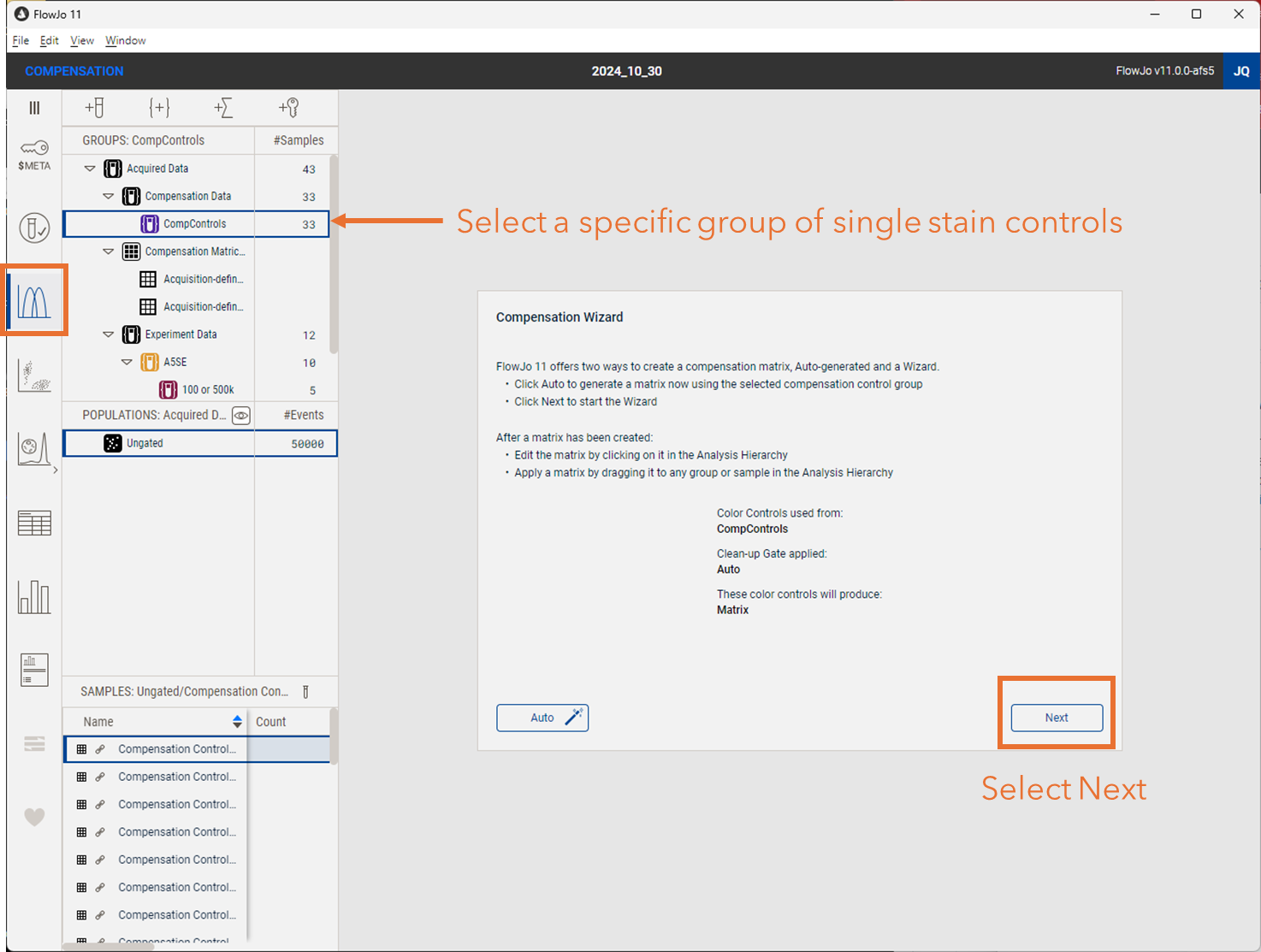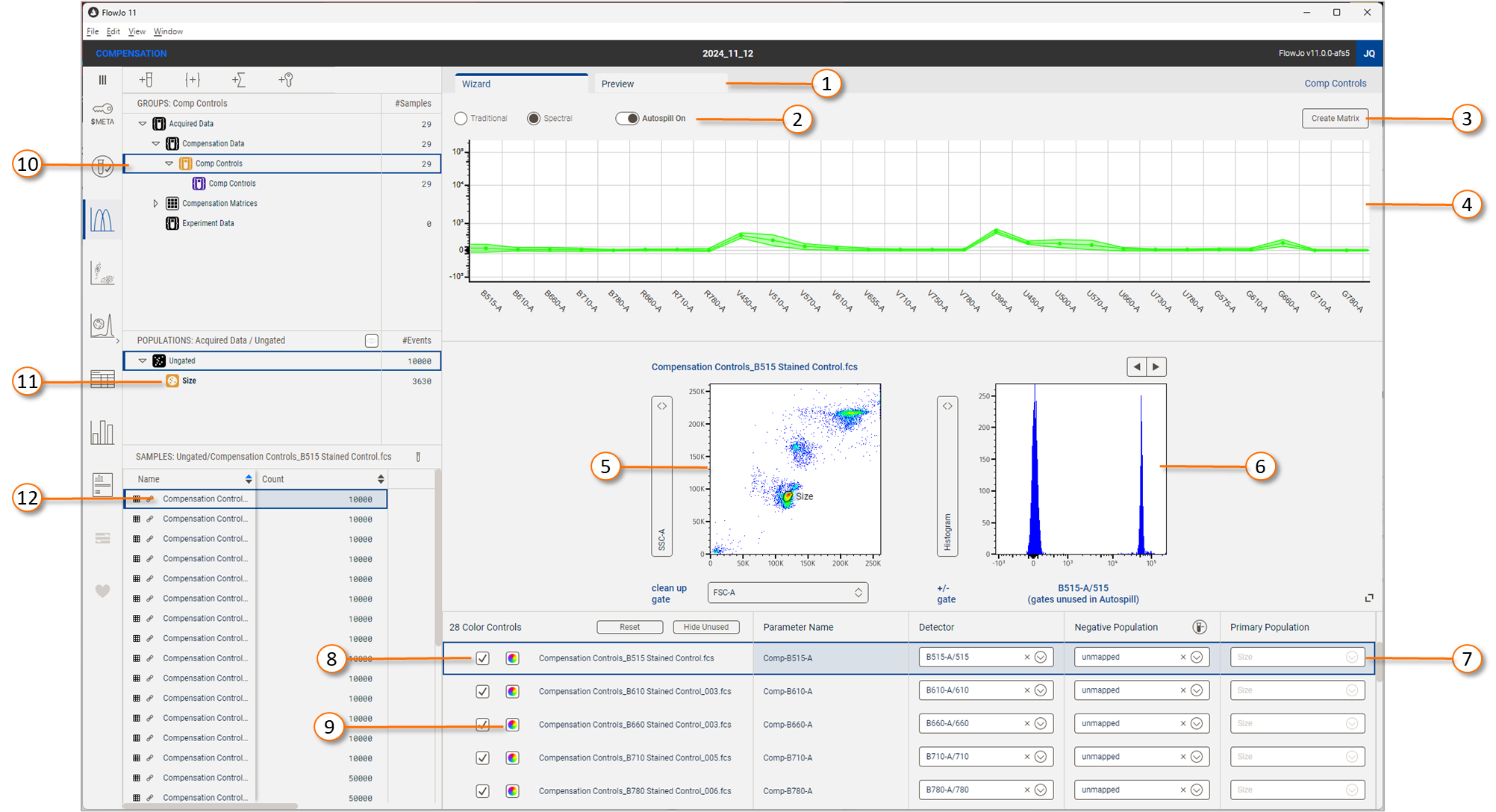The wizard allows you to create a spillover matrix largely automatically, but with more oversight than One touch unmixing.
The Compensation Wizard will automatically assign single stain controls to detectors, create clean-up gates, create positive and negative gates if AutoSpill is not used, and identify universal negatives. It will also pause in the calculation to allow you, the expert, to make any corrections you deem necessary before proceeding to either creating or previewing the spillover matrix.
Use
Begin using the wizard by:
- Selecting the Compensation Context from the context bar, as shown in Figure 1
- Select a specific group of single stain controls from the Compensation Data group
- Click the Next button to proceed, also highlighted in Figure 1

Figure 1 initializing the Compensation Wizard
The wizard will next match single stain controls with detectors based by pairing the samples with the brightest signal in a given detector. It will also draw a size based clean-up gate on each sample, attempting the gather a large population of cells with similar scatter intensities that include the positive peak used to align the sample with a particular detector. Scatter intensity is used to define the clean-up gate as cells with similar scatter profiles tend to have similar sizes and complexity, resulting in similar auto-fluorescence. Equal contribution of auto-fluorescence for all populations identified on a single stain control allows the algorithm to do calculations on the signal produced by the fluorochrome, rather than the fluorochrome and some variable amount of background.

Figure 2 The Components of the Wizard
| No. | Component |
|---|---|
| 1 | Tab to Preview |
| 2 | Traditional vs. Spectral & AutoSpill vs. Gate Based selector |
| 3 | Create matrix button |
| 4 | Spectral plot, displayed if spectral option is selected |
| 5 | Graph of clean-up gate for selected sample |
| 6 | Graph of primary population for selected sample |
| 7 | Selected sample with detector and population assignments |
| 8 | Use this sample in creating a matrix check-box |
| 9 | Color controls vs. unstained control selector |
| 10 | Selected group of compensation controls |
| 11 | Automatically generated clean-up gate |
| 12 | Selected sample. Hierarchy can be used for selection throughout |
